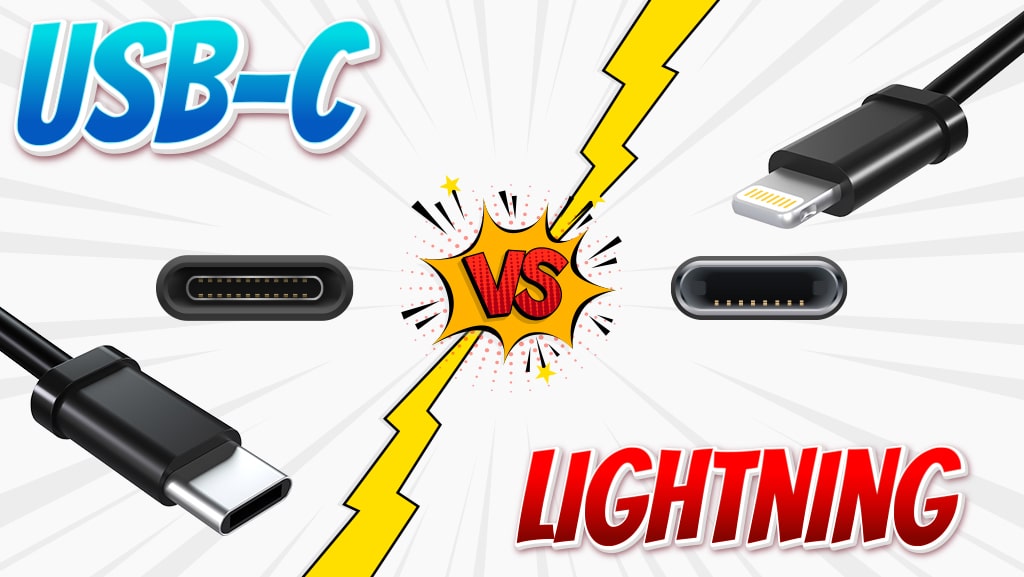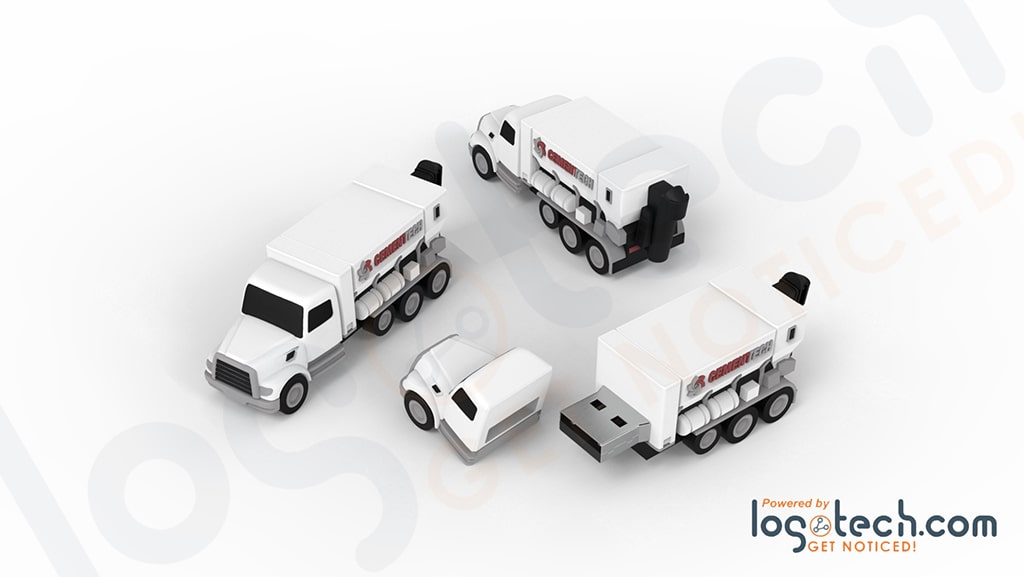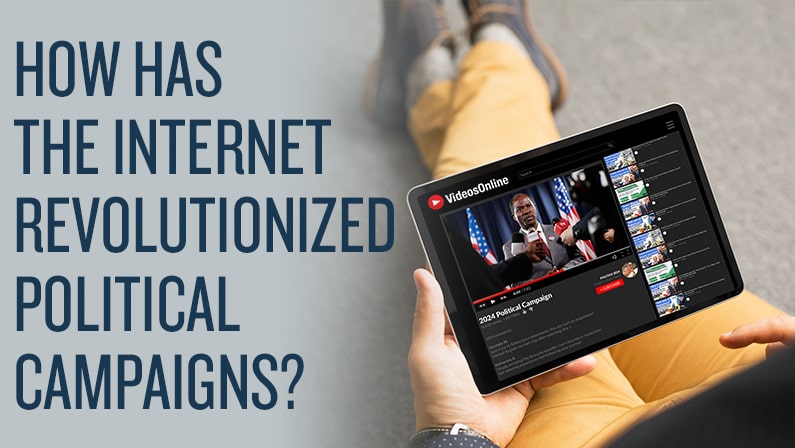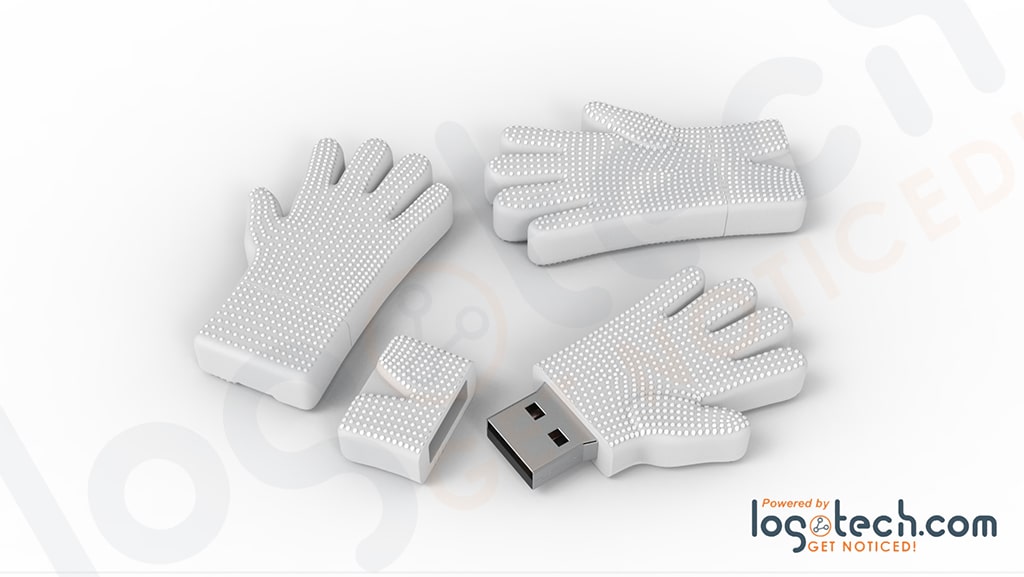
USB-C Vs. Lightning: What's the Difference?
USB connector ports have changed a lot over the years. With all the types of connector systems USB has gone through, it can be easy to get them mixed up. These days, the USB type C and the Lightning cable are two of the most common charging cables. Many questions arise when exploring Lightning versus USB-C: Is USB-C the same as Lightning? Does USB-C charge faster? What devices use USB-C? There are many things to consider regarding the types of connector systems– data transfer rates, charging speed, and durability are all essential factors. Let's explore the differences between USB type C vs. Lightning.
What is USB-C?
The USB-C is a USB connector launched in 2014. It is a 24-pin connector system used for data transfer and charging. 'C' refers to the shape of the connector, a rectangle with a curved breadth similar to the letter c. The USB-C significantly improved on its predecessors, with a massively increased power supply and faster data transfer speeds with approximately the same size connector. Additionally, the USB-C has rotational symmetry (meaning you can plug it in upside down) and excellent versatility, as USB-C cords feature the same connector system on either end. The USB-C is slowly replacing the USB-B, Mini USB, and Micro USB due to its efficiency and versatility. Older USB versions were not reversible and featured a USB-A connector on one end. You can find USB-C connectors on various portable devices, like non-Apple smartphones and tablets, laptops, household electronics, and cameras.
USB-C: Pros and Cons
The USB-C has many advantages and also some disadvantages. Here are some pros and cons of the USB-C explained:
Pros
-
Efficiency: The USB-C has incredible data transfer speed, at 10 Gbps. It can charge devices up to 20x as fast as standard USB, carrying up to 100 watts of power.
-
Size and Durability: USB-C is smaller and thinner than USB-A connectors but more durable than micro and mini USB connectors.
-
Universality: Because the nonprofit USB Implementers Forum published the USB-C, USB-C is not limited to a specific brand or company's products.
Cons
-
Confusion: The largest downfall with the USB-C is confusion. Given the variety of past and present USB connections, it's easy for consumers to be confused about their needs and wind up with the incorrect cord. Additionally, different variations of the USB-C cord exist with different speeds and functionalities, selecting the correct cord can be challenging.
-
Cost: USB-C products can also cost more than their other types of USB connectors, as they are the newest and most efficient connectors.
What is the Lightning connector?
The Lightning connector is the USB connector introduced by Apple in 2012 before the USB-C was released. It's practically impossible to talk about the Lightning connector without first discussing the iPhone. The Apple iPhone is the most popular touchscreen phone in the short history of mobile phones. Although Samsung has been making up ground in recent years, iPhone sales are still responsible for nearly 20% of smartphone sales worldwide and more than 50% in the US. That is a gigantic market share, and you can easily understand the Lightning connector in its context. Before the Lightning connector, Apple used a 30-pin dock connector for charging and data transfer, which they also developed exclusively for Apple products. The benefits of Lightning are obvious when compared to the dock connector systems. The Lightning connector has just eight pins, allowing for a port four times smaller than the dock connector. It also has rotational symmetry, which allows it to be connected in either direction, whereas the dock connector must be right-side up for connection. It also offered faster speed for charging and data transfer than its antecedent. However, when compared to the USB-C connector, Lightning has slower charging and data transfer speeds, which can lead some to question why Apple won't make the switch to the USB-C.
Lightning Connector Pros and Cons
The Lightning connector has some positive aspects, as well as a few negative ones. Some pros and cons for the Lightning Connector:
Pros
-
Apple Products: the main benefit of Lightning USB connectors is that they support Apple devices like the iPhone and iPad, which have been extremely popular for over a decade.
-
Size: the Lightning connector is slimmer than the USB-C, allowing for thinner devices.
Cons
-
Compatibility: The Lighting cable is exclusive to Apple, which means you can't use the cord to charge devices from other companies without a Lightning to USB-C adapter.
-
Speed: The Lightning cable does not feature data transfer or charging speed as fast as the USB-C.
Lightning vs. USB-C: What are the differences?
There are many differences between USB-C and Lightning. As previously stated, a major difference is that Apple has a proprietary right to the Lightning connector. In contrast, the USB Implementers Forum, which holds more than 700 different companies as members, developed the USB-C. That means you can use a USB-C cable to charge devices from various companies, while Lightning cords only charge Apple products. Apple has even switched to USB-C chargers for some of its laptops and iPads, further limiting the number of devices you can charge with the Lightning cable.
The USB-C also allows up to 100 watts of charging speed and a data transfer speed of 10 Gbps. The Lightning connector is only capable of 18 watts, with 480 Mbps of data transfer speed. The stark difference in those numbers is the primary concern of many with Apple's continued use of the Lightning connector. The Lightning cable features either a USB type A or USB type C connector on the other end, while the USB-C connector uses a USB-C on either end.
Frequently Asked Questions
Q: Why doesn't Apple use USB-C on the iPhone?
A: There are a few reasons Apple does not use USB-C on the iPhone. For one, Apple is the manufacturer of Lightning cables; if they switch to USB-C, they will lose money. Also, Apple has argued the switch would create huge waste, as all devices and cords featuring Lightning connectors would become obsolete.
Q: Why do charging cables stop working?
A: Charging cables generally stop working because the wire inside of the cable has become damaged. Often, this is due to rough handling of the cord. Removing the charger by yanking or bending the cable excessively can damage the cord.
Q: How long can a USB-C cable be?
A: USB-C cables come in many lengths; the max length for the fastest version of USB-C is one meter. Less efficient versions have a maximum length of up to four meters.
Q: How can I charge USB-C devices with a Lightning cable?
A: To charge devices featuring a USB-C port with a Lightning cable, you will need a Lightning to USB-C adapter. The Lightning connector plugs into the port on the adapter, and the USB-C connector on the other end plugs into your device.








